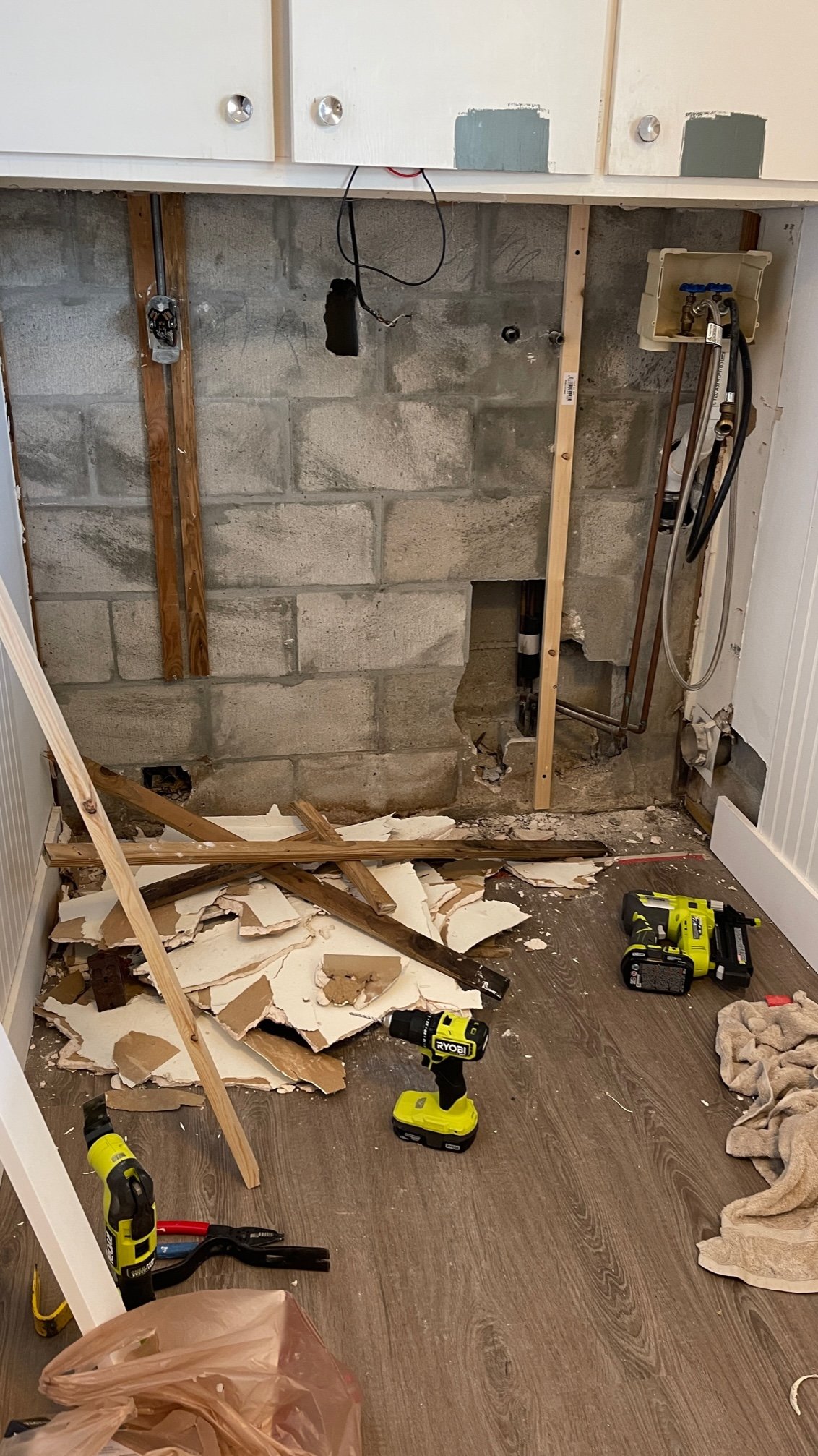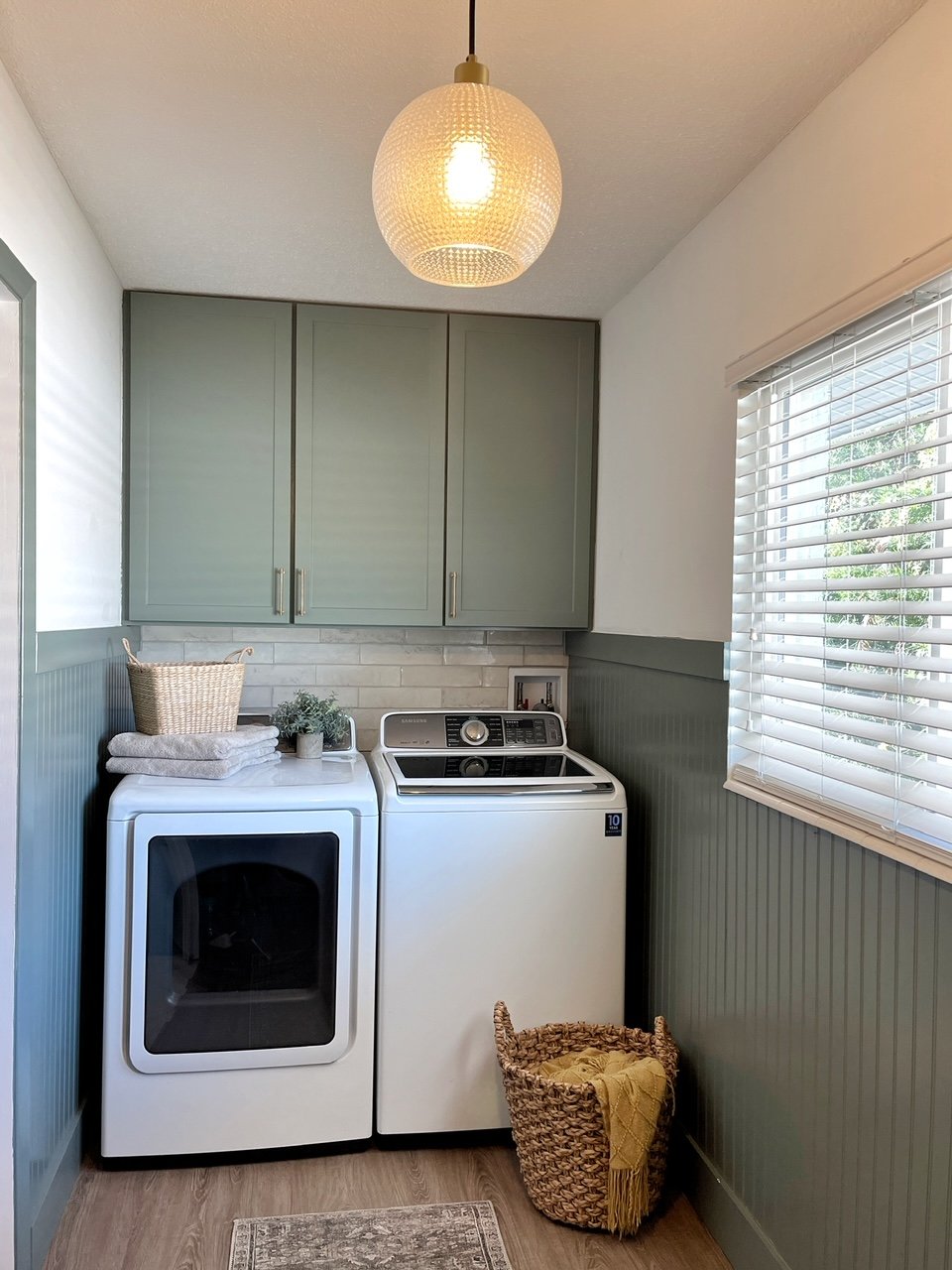Planning a Home Renovation
Home Renovation Checklist - How to Budget for a Home Renovation
We have now lived through three renovations and have learned a lot along the way. In this blog post I will help guide you through the decision making process of a home renovation, find ways to save money, and help you set a realistic budget for your renovation.
Step 1: List all Project Details for the Renovation
This is the brainstorming phase. You will want to list all your wants and needs for the project as well as any details that are specific to your project. For example, you may list: remove wall, new cabinets, replace flooring, new window, add lighting, new hardware, etc. List everything that needs to be removed, replaced, refurbished, bought new, or reworked.
Try starting from the floors and working your way up the walls and to the ceiling. Don’t forget behind the walls too (plumbing, electrical, etc.). This step is basically a brain dumping session to get all the details down on paper. I like to use a new notebook for my renovations and write my notes in the same notebook throughout the project.
Step 2: Consider All Options and Alternatives
There are countless ways to save money during a home renovation. You will want to compare pricing when considering different materials and methods of updating or replacing items during the renovation. This step may take some time as you will need to research pricing or potentially get quotes for different materials or labor. Here are some examples of what to consider and different options for every budget:
Step 3: Hire or DIY
I have listed questions below that you should ask yourself when determining if you should hire out the work or choose to do-it-yourself when it comes to your home renovation.
ARE THERE DETAILED VIDEOS ON YOUTUBE TEACHING YOU HOW TO DO THE SPECIFIC JOB?
WHAT TOOLS ARE REQUIRED TO DO IT YOURSELF? DO YOU OWN THEM/NEED TO RENT THEM?
IS THERE A DEADLINE FOR COMPLETION THAT NEEDS TO BE MET?
DO PERMITS AND/OR INSPECTIONS REQUIRE A PROFESSIONAL?
DO YOU HAVE EXPERIENCED FRIENDS OR FAMILY WHO CAN HELP YOU?
Tips for Hiring a Contractor During a Renovation
Checkout my blog post on 7 Tips for Hiring a Contractor
Step 4: What Tools & Materials Are Needed for the Renovation
You will want to list out the tools and materials that will be needed for your renovation project. Some examples are a saw, drill, nail gun, flooring tools, paint supplies, etc. Once you have made your list, you will want to note which materials you will need to purchase or rent and which ones you already own. Tools that need to be purchased or rented will need to be factored into your renovation budget.
Step 5: Research and List Prices
Now that you have listed out all the details of your project, determined what options/alternatives you are going with, know what you plan to DIY and what you need to hire out, and figured out what tools you will need to purchase/rent, you will now start to write down prices for everything. Refer back to your lists and notes in previous steps to make a list all the products, materials, tools and hired help you will need to purchase for your renovation.
Research each item and list the price. Make sure you consider annual sales, shipping costs, and product availability when shopping and gathering pricing. This step will take some time and is crucial in order to determine an accurate budget.
Step 6: Subtotal Renovation Expenses
In this step, you will want to subtotal all your categories of the renovation. I have listed some categories below as an example of how I list out mine. By putting your expenses into categories and subtotaling them, you can get a better look at where some of your highest expenses may be. Remember to revisit Step 2 for alternatives if your subtotals end up being higher than you expected.
Step 7: Total All Renovation Expenses
Here you will want to take all of your subtotals from Step 6 and get the grand total. I recommend calculating and adding on an additional 10-15% of your grand total for unexpected costs that may arise. On all three of our home renovations we have had unexpected expenses that came up during the renovations.
Your total expenses should give you a realistic budget of what you can expect to spend on your home renovation. If this total is outside your desired budget, I recommend going back through your project details and considering alternative methods or explore different finishes that could save you money.
Home Renovation Pro Tips
TO HELP STAY ON BUDGET, CONSIDER OPENING A SEPARATE CHECKING OR SAVINGS ACCOUNT THAT IS USED STRICTLY FOR THE RENOVATION.
DO A "BUDGET CHECK-IN" AFTER EVERY STEP OF YOUR PROJECT TO SEE IF YOU ARE STICKING TO YOUR BUDGET. IF SOMETHING ENDS UP COSTING SIGNIFICANTLY MORE THAN YOU HAD EXPECTED, TAKE A LOOK AT THE REMAINING STEPS OF YOUR PROJECT AND SEE IF MONEY CAN BE SAVED ELSEWHERE.
SOME TOOLS NEEDED FOR YOUR RENOVATION MAY BE VERY EXPENSIVE. IF YOU DON'T THINK YOU WILL USE THE TOOL MUCH AFTER THE RENOVATION, CONSIDER RENTING THE TOOL, BUYING ONE USED, OR BORROWING ONE FROM A FRIEND OR FAMILY MEMBER TO SAVE MONEY.
BEFORE STARTING ANY DEMO ON YOUR SPACE, DETERMINE IF ANYTHING YOU ARE REMOVING CAN BE SOLD. WE HAVE BEEN ABLE TO SELL OLD BATHROOM VANITIES, SINKS, DOORS, WINDOWS, CABINETS, AND EVEN PLANTS ON NEIGHBORHOOD FACEBOOK MARKET SITES AND IN GARAGE SALES. THIS EXTRA MONEY CAN BE USED TOWARD YOUR RENOVATION.



















HEY THERE, I’M ASHLEY!
Here to inspire beginner DIYers!